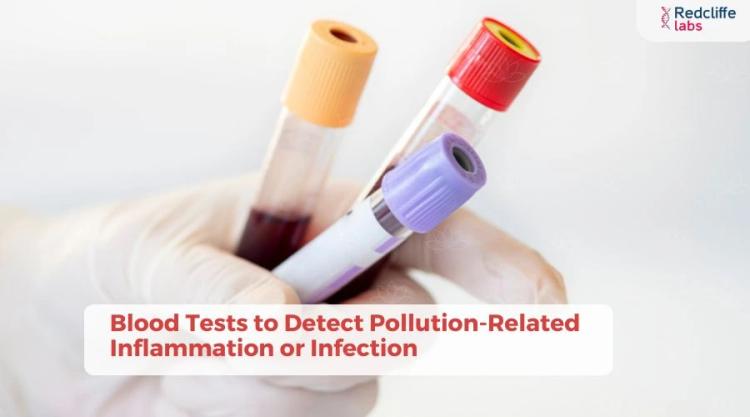Kallmann Syndrome: What Is It? What Are the Symptoms?

Medically Reviewed By
Dr. Ragiinii Sharma
Written By Srujana Mohanty
on Apr 30, 2022
Last Edit Made By Srujana Mohanty
on Jan 9, 2025

Kallmann syndrome is an extremely rare genetic disorder that affects 1 in 30,000 males and 1 in 120,000 females – making the condition more prevalent in men.
Besides impairing a person’s ability to smell things, the condition also delays puberty in the affected patient. Therefore, it is categorized under congenital hypogonadotropic hypogonadism (CHH), marked by the brain’s decreased efficiency in releasing hormones that regulate puberty and the sexual hormones in the body.
Although present at birth, Kallmann Syndrome is often diagnosed later in life in most patients. Also, the inability to smell distinct distinguishes this genetic condition from other types of CHH disorders.
This article will explore everything related to Kallmann Syndrome, its causes, symptoms, and possible treatment options.
What is Kallmann Syndrome?
As mentioned before, Kallmann Syndrome is a rare genetic disorder that affects a person’s ability to smell and delays their puberty due to a lack of subjective hormonal production.
Most patients with Kallmann Syndrome either have hyposmia (diminished sense of smell) or anosmia (no sense of smell).
The condition results from the restrictive production of certain sex hormones due to an underactive hypothalamus in the brain.
Also, people with Kallmann Syndrome don’t exhibit secondary sexual characteristics by puberty, leading to the need for further diagnosis and treatment to correct the complications.
What Causes Kallmann Syndrome?
Kallmann Syndrome is a genetic disorder, which is caused by gene mutations. These unwelcome mutations directly impair the functions of specific neurons in the brain, leading to the Kallmann Syndrome. Over 25 different types of genetic mutations are involved in the disease.
Out of them, the most prominent genetic mutations occur in:
- ANOS1
- CHD7
- FGF8
- FGFR1
- PROK2
- PROKR2
Besides genetic mutations, 50% of the causes stem from other idiopathic causes that are still unknown.
How are the Genetic Mutations Expressed in Kallmann Syndrome?
According to the latest research, Kallmann Syndrome’s genetic mutations are inherited in one of the three ways:
X-Linked pattern – males need a single copy of the mutated gene while females need two copies of the mutated gene to express the disease.
Autosomal dominant pattern – one parent with the genetic mutation passes it down to their offspring.
Autosomal recessive pattern – mutations in the PROKR and PROKR2 are part of this type of genetic inheritance. None of the parents showcase any disease symptoms, but their child does.
What are the Symptoms of Kallmann Syndrome?
As we mentioned, the genetic mutations associated with Kallmann Syndrome are attained at birth. However, later during the adolescent stages, the condition is diagnosed. Most people get diagnosed between the age of 14-and 16 years when they don’t express signs of puberty.
Some of the Kallmann Syndrome symptoms include:
- Cleft lip
- Cleft palate
- Absence of kidney
- Abnormal eye movements
- Partial or complete loss of sense of smell
- Vision impairments
- Micropenis
- Testicles don’t descend before birth
Bimanual synkinesis (one hand’s movement is mimicked by the other involuntarily)
The symptoms of Kallmann Syndrome and normosmic idiopathic hypogonadotropic hypogonadism (nIHH) are very similar. So, confusion and misdiagnosis of these two conditions are common. The only distinguishing factor between the two is that people with Kallmann Syndrome have an impaired sense of smell.
How is Kallmann Syndrome Diagnosed?
The diagnosis of Kallmann Syndrome doesn’t happen until the individual doesn’t showcase signs of puberty and secondary sexual characteristics.
Since it is a genetic disorder, the mutation is present at birth. Since this is a genetic disorder, the involved biochemical or blood tests involve testing for:
- Luteinizing hormone (LH)
- Follicle-stimulating hormone (FSH)
- Sex steroid hormones like testosterone, estrogen, etc.
- Gonadotropin-releasing hormone (GnRH)
Besides the blood tests, doctors might suggest imaging tests like MRI of the pituitary gland and hypothalamus to check for anatomical anomalies. The imaging tests will also analyze the nasal anatomy.
If none of the above ascertain the diagnosis of Kallmann Syndrome, your doctor will prescribe genetic testing to confirm the diagnosis.
To assess the issues with the sense of smell, doctors can run a thorough smell test involving over 40 smells to ascertain the degree of damage.
What are the Treatment Options for Kallmann Syndrome?
People suffering from Kallmann Syndrome face two complications at two different stages in their lives.
Initially, it starts with a lack of puberty and the onset of secondary sexual characteristics individually. Later, the disorder can lead to infertility due to a lack of optimal sexual hormone balance in the bloodstream.
So, the treatment options for Kallmann Syndrome target these issues. It starts by inducing puberty in the patient and later support their hormonal balance to prevent or reduce the risks of infertility.
The treatment starts with hormone replacement therapy, involving testosterone for males and estrogen and progesterone for females. In some instances, doctors might prescribe a GnRH pump to stimulate the hormone production in the body.
Hormone replacement therapy regulates the hormonal balance and triggers the onset of puberty in the diagnosed patients.
Later in life, supportive infertility treatments with LH and FSH injections, synthetic GnRH administration, etc., reduce the risks of infertility and helps with successful conception. Studies suggest that fertility success in males with Kallmann Syndrome is between 75-and 80%.
Infertility due to Kallmann syndrome in females can be treated with assistive reproductive techniques for their pregnancy and fertility journey.
Also, despite not being a life-threatening or fatal condition, Kallmann Syndrome has a lifelong prognosis. Therefore, most patients are advised to undergo genetic counseling and additional therapy sessions to support their outlook on the disorder and the associated complications that come with it.
FAQs
Which celebrities have Kallmann Syndrome?
There are not many Kallmann syndrome celebrities but a few notable ones include Jimmy Scott and Brain Brett.
Can Kallmann Syndrome be cured?
Since Kallmann Syndrome is a genetic disorder, there is no definitive cure for the disease yet. However, assistive treatments like hormone replacement therapy, etc. enable the patients to live a normal life.
Can people with Kallmann Syndrome have kids?
Infertility is a major consequence of Kallmann Syndrome. However, with proper diagnosis and treatment, diagnosed patients can have a healthy baby.
Conclusion
Kallmann Syndrome is a rare inherited genetic disorder that affects males more than females. Getting an early diagnosis enables the individuals to experience a barrage of symptoms associated with puberty and infertility. People diagnosed with the condition can live a relatively comfortable everyday life with few medical alterations and assistive treatments.



